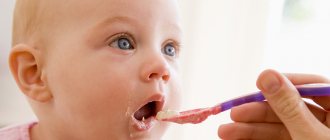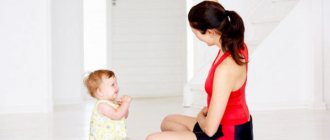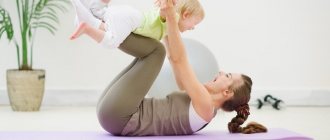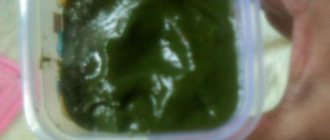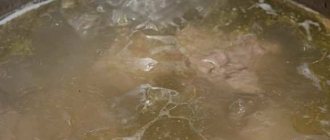It is important!
The benefits of gymnastics are undeniable, but before you start exercising with your baby, you should definitely consult with your pediatrician. During the first weeks after the hospital, he will visit you at home. There are few contraindications against gymnastics for a baby, but they still exist. You should refrain from exercise if the child has skin diseases, problems with the heart and respiratory system, and others. In some cases, a child requires a professional massage, which cannot be replaced by independent gymnastics at home.
What time to do gymnastics
Gymnastics should be done daily, 3-5 1-2 sessions per day. Perform exercises at least half an hour before meals or 1 hour after feeding.
Conditions for classes
- Ventilate the room where you will study with your baby. The room should be warm, but not hot. The optimal temperature is 20-21 degrees. During the massage, the child also takes air baths - an important hardening factor.
- Conduct classes on a flat, hard surface: on a changing or regular table, or the lid of a chest of drawers. A bed or sofa is not suitable for these purposes, as it will sag under the child and there will be no effect from the exercises. To make your baby comfortable, place a thin blanket on the tabletop and cover it with a diaper.
- The child should be in a good mood, calm and active. If he wants to sleep, is capricious or unwell, classes should be postponed.
- The mother should also tune in to communicate with the baby, not rush anywhere, and not fuss.
- Gymnastics should be combined with air baths. Undress your baby and remove his diaper. Let nothing hinder his movements.
- While doing the exercises, talk to your baby, recite nursery rhymes, and sing songs. You can turn on soft background music.
Massage, gymnastics for a 7 month old baby
At 7 months, the baby already sits well and holds his back straight. Some babies already know how to sit up on their own, crawl on their stomachs or all fours, stand up and stand against a support. If your baby is not yet sitting or crawling, consult your doctor and also spend more time doing gymnastic exercises. Crawling is a very important and responsible stage in a child’s development, because this exercise strengthens all types of muscles: the muscles of the legs, arms, back, and abs. Crawling provides the child with strong back muscles and good posture in the future. It happens that children do not crawl, but immediately walk, this is not very good, then such a child, years later, may begin to complain of back pain, and then doctors advise that crawling be included in the complex of therapeutic exercises.
Most often, babies begin to crawl on their stomachs, this makes them very happy, because now they can get to the objects and toys that interest them . Then the baby learns to stand on all fours, and finally begins to move his legs and arms, first simultaneously, so that his movements are more like the jumping of a hare, then the child masters cross crawling, when the arms and legs move alternately. This type of crawling is considered the most perfect and is a good indicator of the physical development of a child of 7-9 months. In order to encourage the baby to move, it is important not to limit him to the space of one playpen, let the baby out on the floor or a wide double bed or sofa. But don’t leave your baby alone in the room for now, otherwise he will associate the floor with loneliness and he will be afraid to move around it.
Watch how the child sits, his back should be straight, his chest should not be deformed when sitting . Therefore, there is no need to cover the child with pillows to make him sit; it is better to encourage him to sit independently by doing gymnastics and massage. When the baby's muscles become stronger, he will sit and stand up on his own.
The set of exercises for a 7 month old baby is almost the same as for a 6 month old baby . Difficult exercises that were difficult for the baby can now be done not 1-2 times, but 3-4 times. The time for classes is also lengthened, but the condition remains unchanged: during massage and gymnastics, the baby must be alert and should not want to sleep or eat. Here is a set of exercises.
Exercises for babies up to 2 months
- Place your baby on his back. With both hands, make light stroking movements from the center of the chest to the sides - 3-5 times.
- Stroke the baby's tummy in a clockwise circular motion - without effort, without pressing.
- Let your baby wrap his fist around your finger. Stroke his arms one by one, moving from the hands to the shoulders – 5-6 times. Then gently massage your brushes.
- Stroke your baby's legs 5-6 times from the feet to the hips. Then with your thumb, gently press on the baby’s foot at the base of the toes - the baby will reflexively press them. Maintaining light pressure, move along the foot to the heel. Repeat 5 times for each leg.
- Turn the baby onto his stomach. Stroke his back from head to buttocks with the back of your hand 6-7 times.
- Place your palms on your baby's feet and apply gentle pressure as if pushing them forward. The baby will make reflexive attempts to crawl. The exercise helps strengthen the muscles of the back and abdomen, and trains the legs.
- Turn the child onto his side. Without pressing, move your finger along the spine from top to bottom. The baby will reflexively arch his back and return to his original position. Do the exercise 1-2 times on each side.
Physical exercises for children at 6 months
How much should a baby weigh at 10 months?
Before starting gymnastic training, you need to warm up the muscles and joints of your legs and arms.
Exercises with legs
Starting position – lying on your back, legs straight.
- Holding the baby's hip with one hand, bend and straighten the other leg with the other, 5-6 times. Repeat the exercise with the other leg.
- Bend and straighten your legs together – 10 times.
- Exercise "bicycle". Grabbing your calves, alternately bend and straighten both legs 8-10 times.
- The mother wraps her hand around the knee and part of the thigh of the child’s bent leg, carefully making circular movements, first one leg, then the other – 5-6 times.
- Bring your baby's feet together and quickly clap them together 10 times.
- Bend both legs of the child and place their feet on the mat, in a lying position, lift them and place them again, 10 times.
Hand exercises
Position – lying on the back, the child’s arms and legs are straightened.
- Taking the baby's hand, bend and straighten the arm at the elbows 5 times. Repeat with the other hand.
- Exercise "mill". Make active swings of the arms from the head to the legs in a cross direction, 10 times.
- "Hug" exercise. Alternately cross the arms on the baby's chest, first the left hand on top, then the right, 10 times.
After the muscles and joints are warmed up, you can begin more complex exercises. Such exercises are useful for babies not only 6 months old, but also younger.
Exercises with handles
Exercises for babies 2-6 months
Gymnastics for babies over two months of age should also begin with a light massage. Under no circumstances do we press on the baby’s skin or apply any force. We add more complex exercises to the previous complex:
- After massaging your hands, let your baby hold your thumbs and spread his arms to the sides. Having fixed them in this position for a couple of seconds, cross the baby’s arms over his chest. Repeat the exercise several times, alternating hands: first the right one on top, then the left one.
- After massaging the legs, grab your baby's shins. Perform the “bicycle” exercise: bend your legs one by one, pressing them to your stomach. Then bend both legs at the same time several times.
- Grab your baby's torso under the arms and lift him vertically. Let him touch his feet—not his toes—to a flat surface. He should reflexively step with his legs, as if walking. It is important to keep the baby suspended. The baby should not fully lean on his legs. They, like the baby’s spine, are not yet ready for such loads.
More complex complexes must be discussed with your doctor. Remember, every child is unique, you need to approach classes taking into account the individual characteristics of your baby.
Gymnastic complex No. 4. for a child 6-9 months
1. Exercise crossover of the upper limbs in the region. breasts The number of repetitions is 6-8. 2. Exercise for the lower extremities. Simultaneously bend and straighten the child’s legs. The number of repetitions is 4-6. Alternately bend and straighten the child’s legs. Number of repetitions - 4-6..
3. Turning the child onto his stomach (through any side).
4. Massage of the dorso-gluteal area of the child. The massage technique is stroking. The number of repetitions is 2-3. The area of influence is the entire area of the back and buttocks. Reception of massage - rubbing. The area of influence is the entire area of the back and buttocks. The number of repetitions is 2-3. The massage technique is stroking. The number of repetitions is 2-3. The area of influence is the entire area of the child’s back and buttocks. Taking a massage is kneading. The number of repetitions is 2-3. The area of influence is the entire area of the back and buttocks. Stimulating massage techniques include tapping and pinching in the child’s buttocks.
5. Stimulation of a child crawling on his knees.
6. Massage the child’s abdominal area. The massage technique is stroking. The number of repetitions is 2-3. Reception of massage - rubbing. The number of repetitions is 2-3. Perform with the pads of bent fingers. Massage technique - sawing. Direction: along the rectus abdominis muscles. The number of repetitions is 2-3. The massage technique is pinching. The area of influence is around the baby’s navel. The massage technique is stroking. The number of repetitions is 2-3.
7. Sitting the child + arching the back. Number of repetitions - 2.
8. Movement of the child’s upper limbs in a circle. The number of repetitions is 4-6.
9. Foot massage.
10. Raising the child’s straight lower limbs. The number of repetitions is 6-8.
11. Raising the child from the starting position lying on his stomach. The number of repetitions is 1-2.
12. Massage the child’s chest area. The massage technique is stroking. The number of repetitions is 2-3. The massage technique is vibration. The number of repetitions is 2-3. The massage technique is stroking. The number of repetitions is 2-3.
13. Exercise “sit down.” Hold the child by the bent arms. The number of repetitions is 1-2.
14. Boxing exercise. The number of repetitions for each child’s hand is 5-6.
15. "Car".
Special instructions for performing massage and exercises for a child 6 - 9 months old
1. Crossing the child’s upper limbs in the chest area. At this age, some complicating aspects appear in this exercise. the speed of the exercises either increases or decreases; The child squeezes rings or other toys that are convenient to hold into his fists. The number of repetitions of the exercise is 6-8. Accompany the exercises with an even count.
2. Exercises for the child’s lower extremities. Simultaneously straighten and bend the baby's legs. The number of repetitions is 4-6. Take the child lying on his back with his head away from you by the ankles and bend and straighten his legs one by one. The speed of the exercise varies from a “walking” pace to a “running” pace. Rest the soles of your child’s feet on your little toes, then all the muscles of the lower limb and foot will be involved in this passive gymnastics exercise.
3. Turning the child onto his stomach from his back. After six months, when performing this exercise, they no longer support the baby’s hand with the command “turn on your stomach.” You can help your child by slightly turning the pelvic girdle and showing the toy on the side where you plan to roll over.
4. Massage of the dorso-gluteal area of the child. The massage technique is stroking. The number of repetitions is 2-3. Reception of massage - rubbing. Perform with the pads of bent fingers. The number of repetitions is 2-3. The massage technique is stroking. The number of repetitions is 2-3. Massage technique - sawing. The area of execution is the entire area of the dorso-gluteal region. The massage technique is stroking. The number of repetitions is 2-3. Taking a massage is kneading. Separately knead one buttock of the child, then the other. The number of repetitions is 5-6 on each buttock. The massage technique is stroking. The number of repetitions is 2-3. Stimulating massage techniques - pinching or tapping in the buttocks area.
5. Stimulation of crawling on knees. Place the baby on his stomach with his arms straight. Most likely, he is already making attempts to kneel down and crawl on his own. If this is not happening yet, then your task is to help the child. Place the child on his knees and hold the toy at a short distance in front of him and encourage him to crawl. Crawling is very beneficial for the muscles of almost the entire body and limbs. The exercise is active-passive. When the child begins to crawl without assistance, this exercise is removed from the training complex, but the baby is allowed to crawl on the floor.
6. Massage the child’s abdominal area. The massage technique is stroking. The direction of movement is in a circle, towards, obliquely. The number of repetitions is 2-3 in each direction. Reception of massage - rubbing. Perform with the pads of bent fingers. Massage technique - sawing. Perform along the rectus abdominis muscles. The number of repetitions is 2-3. A stimulating massage technique is pinching. The number of repetitions is 2-3. The massage area is peri-umbilical. Completion - receiving a “stroking” massage. The number of repetitions is 2-3.
7. Sitting the child + straightening the back. What changes in the technique of performing this exercise is that now the child can be seated by holding only one hand. Place the baby on his back. With one hand, secure the baby’s knees, with the other hold his hand across from yours, and at the command “sit down,” gently pull the child so that he sits down through the support on the elbow. When the child is in a sitting position, run any two fingers of your free hand along his spine from the buttocks to the neck so that he arches his back. After this, place the baby back on his back, protecting the back of his head. You should lie down on your side.
8. Movement of the child’s upper limbs in a circle. The child squeezes rings or other toys that are comfortable to hold into his fists. The pace of execution is slow. Accompany with an even count. The number of repetitions is 4-6.
9. Massage the child’s feet. Exercises are not reflexes. The massage technique is stroking. Reception of massage - rubbing. The area of influence is the pads at the base of the toes and the outer edge of the foot. As a result of this rubbing, a reflex flexion-extension of the foot should occur. The end of the massage is tapping on the sole of the foot.
10. Raising the child’s straight legs. Place your baby on his back. Make rings from your index fingers and thumbs and secure them on the child’s shins, palms down. The remaining fingers rest freely on the knees. Raise the child's straight legs to an angle of 90 degrees relative to the table surface and lower them. First simultaneously, then one by one. The number of repetitions is 6-8.
11. Raising the child from the starting position “lying on his stomach.” Hold the child by straight arms. Place your baby on his stomach. Place your thumbs in your child's hands. Gently fix the remaining 4 fingers on his hand. Spread your baby's straight arms to the sides. To prevent your child from bending his arms, rest your palms on his elbows. Then, raise your hands to your ears. The child will throw his head back, resting his feet on your stomach. Continue lifting until he is on his knees. Children over 8 months old do this exercise by holding rings or toys in their hands and lifting them to a standing position. Raising your torso is an active exercise.
conclusions
- Gymnastics strengthens muscles, gives the baby a good appetite, healthy digestion and sound sleep.
- Classes should be carried out half an hour before meals or 1 hour after, in a ventilated room, on a flat, hard surface.
- When working with a newborn, it is enough to make light stroking movements: from the center of the chest to the sides, from the hands to the shoulders, from the feet to the hips, from the neck to the buttocks. The tummy should be stroked in a clockwise circular motion.
- As the baby gets older, you need to add reflex crawling and walking, straightening the back in a side position, and bending the arms and legs to the exercises.
- The technique of performing gymnastics for infants should be agreed upon with a doctor. If you are unsure how to do an exercise, ask a massage nurse to teach you. Unskillful movements can harm the child.
